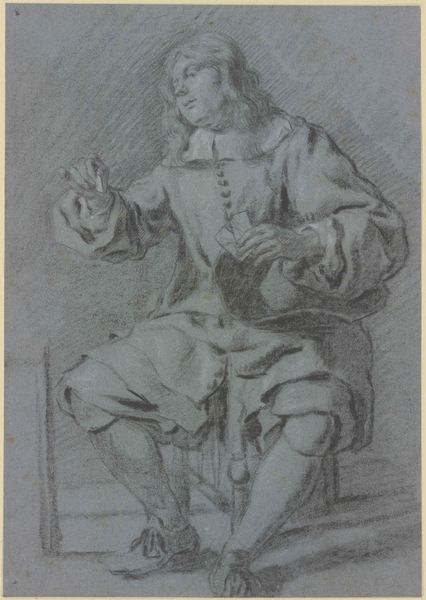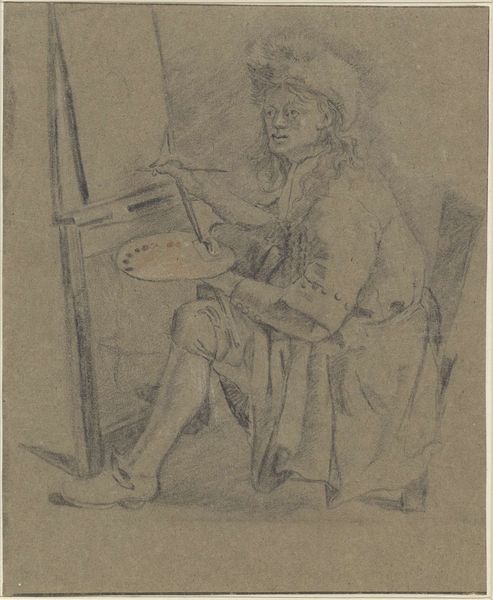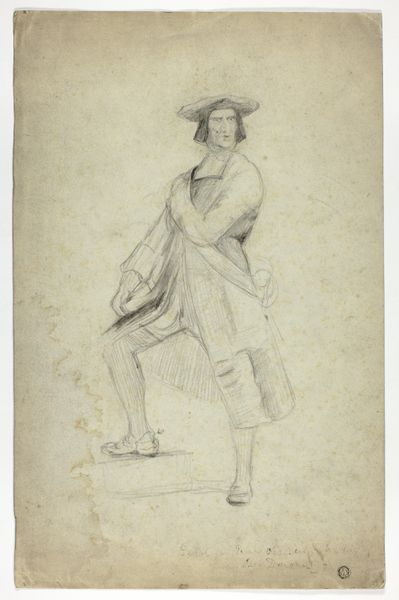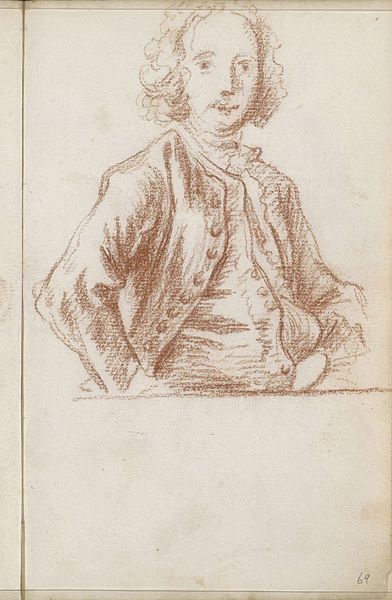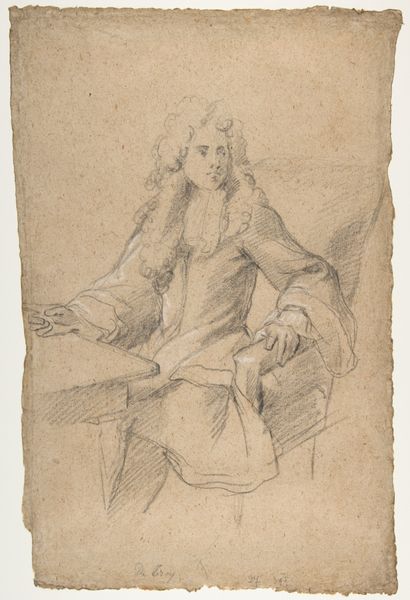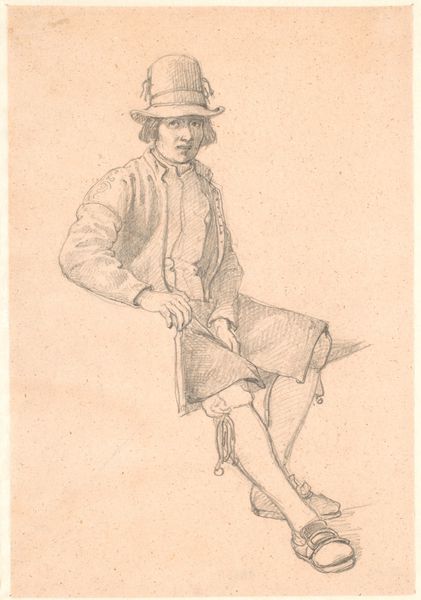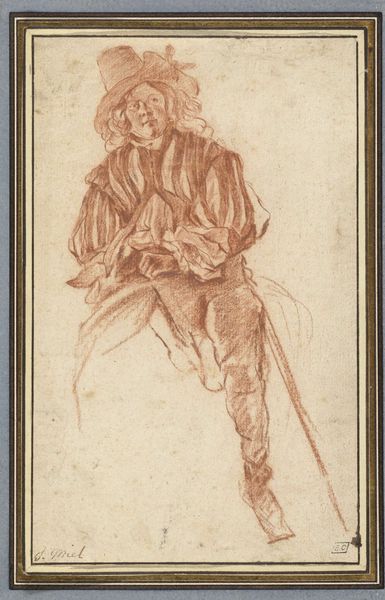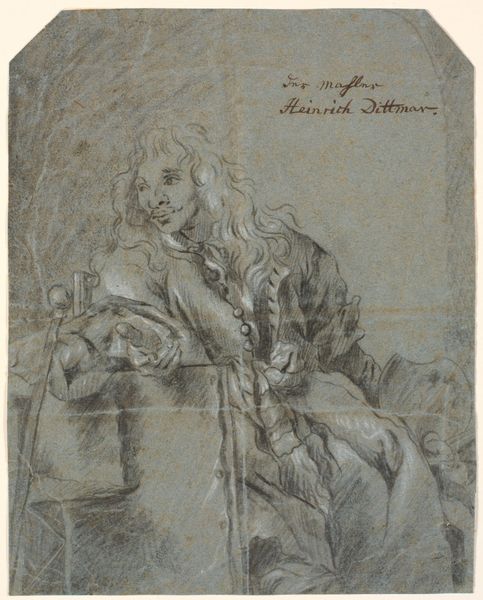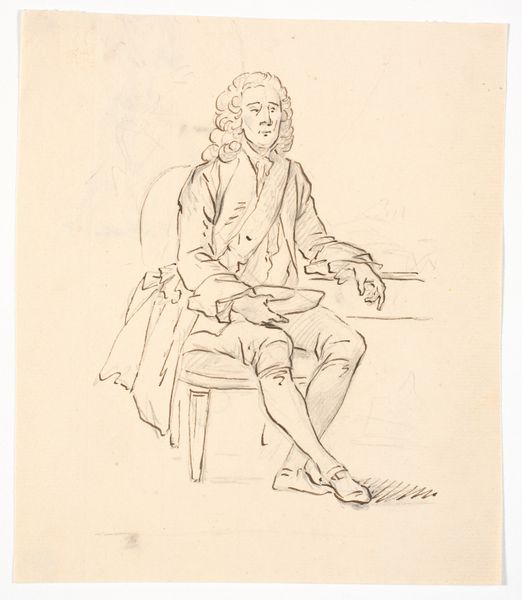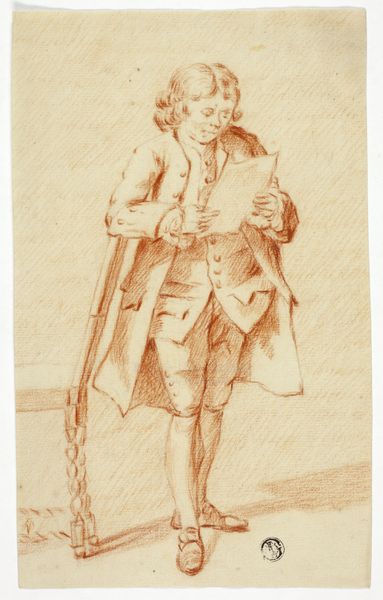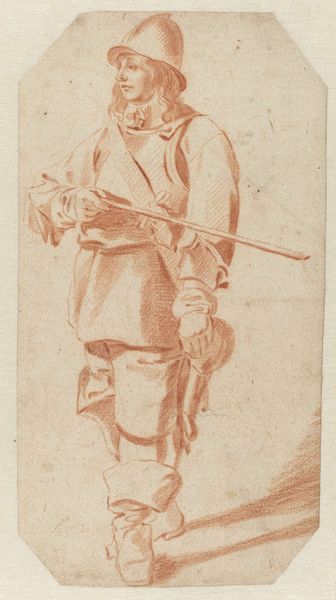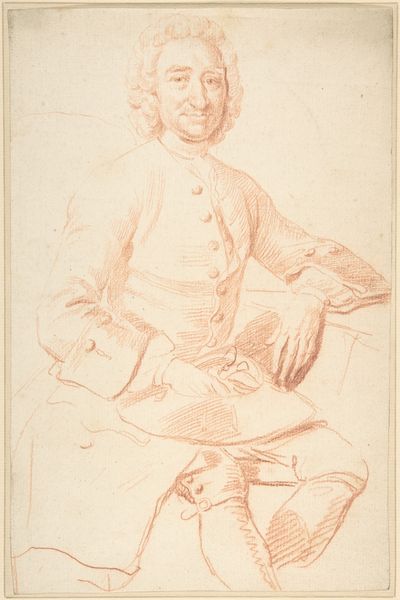
drawing
#
pencil drawn
#
drawing
#
amateur sketch
#
light pencil work
#
pencil sketch
#
charcoal drawing
#
personal sketchbook
#
pencil drawing
#
pen-ink sketch
#
men
#
portrait drawing
#
pencil work
#
arm
Dimensions: 10 9/16 x 7 3/16 in. (26.8 x 18.3 cm)
Copyright: Public Domain
Editor: So, this is Gerard ter Borch the Younger's "A Seated Huntsman," drawn in 1672. The work is on view at the Metropolitan Museum of Art and appears to be a pencil drawing. I am struck by the casual nature of it. He almost seems caught off guard. What's your take on this work? Curator: Caught off guard, yes! There's an intimacy here, a vulnerability almost, isn’t there? Ter Borch captures this huntsman in a moment of repose. Not the triumphant, heroic hunter we might expect, but a person simply...existing. Imagine yourself, Editor, sketching in a bustling tavern – could this be a study done in just such a fleeting, unguarded moment? The almost hesitant lines give it that lovely sense of immediacy. It feels less like a formal portrait, more like a stolen glance. It’s less about hunting and more about being. Editor: A stolen glance – that’s a lovely way to put it. I see what you mean about the lack of formality, like a glimpse into daily life rather than something staged. So, how does this relaxed mood fit within the broader context of Ter Borch's work? Curator: Good question! Ter Borch often depicted scenes of elegant life, polished and refined. But here, the elegance is stripped away, revealing a raw humanity. The huntsman's pose isn't grand, the pencil work isn't pristine, and the context, from the look of it, suggests a plainness beyond the usual aristocratic portraits of the period. Editor: So, maybe this piece provides a more authentic peek into Dutch life beyond the upper class? Curator: Precisely! And perhaps Ter Borch was consciously experimenting with this different register, inviting us to ponder not just status and refinement, but also the quiet dignity of the everyday individual. What's interesting is that the very sketchiness underscores the candid effect. The less said, the more room there is for our imaginations to color in the experience. Editor: I definitely learned a lot. Thanks. The piece really has a more relatable quality when viewed as an intimate observation rather than just a portrait of a huntsman. Curator: Indeed. Art, at its heart, isn't about portraying; it's about connecting – fleetingly, perhaps, like a stolen glance – but profoundly all the same.
Comments
No comments
Be the first to comment and join the conversation on the ultimate creative platform.
